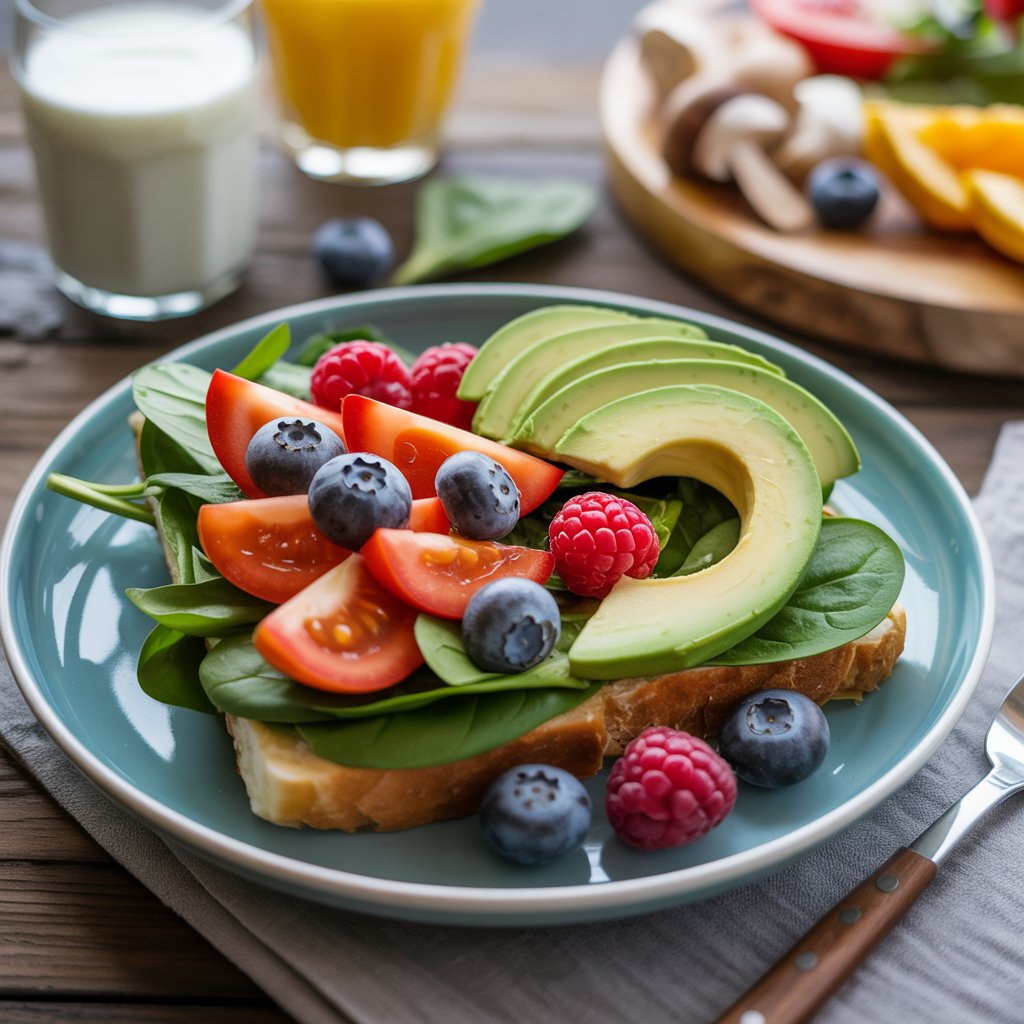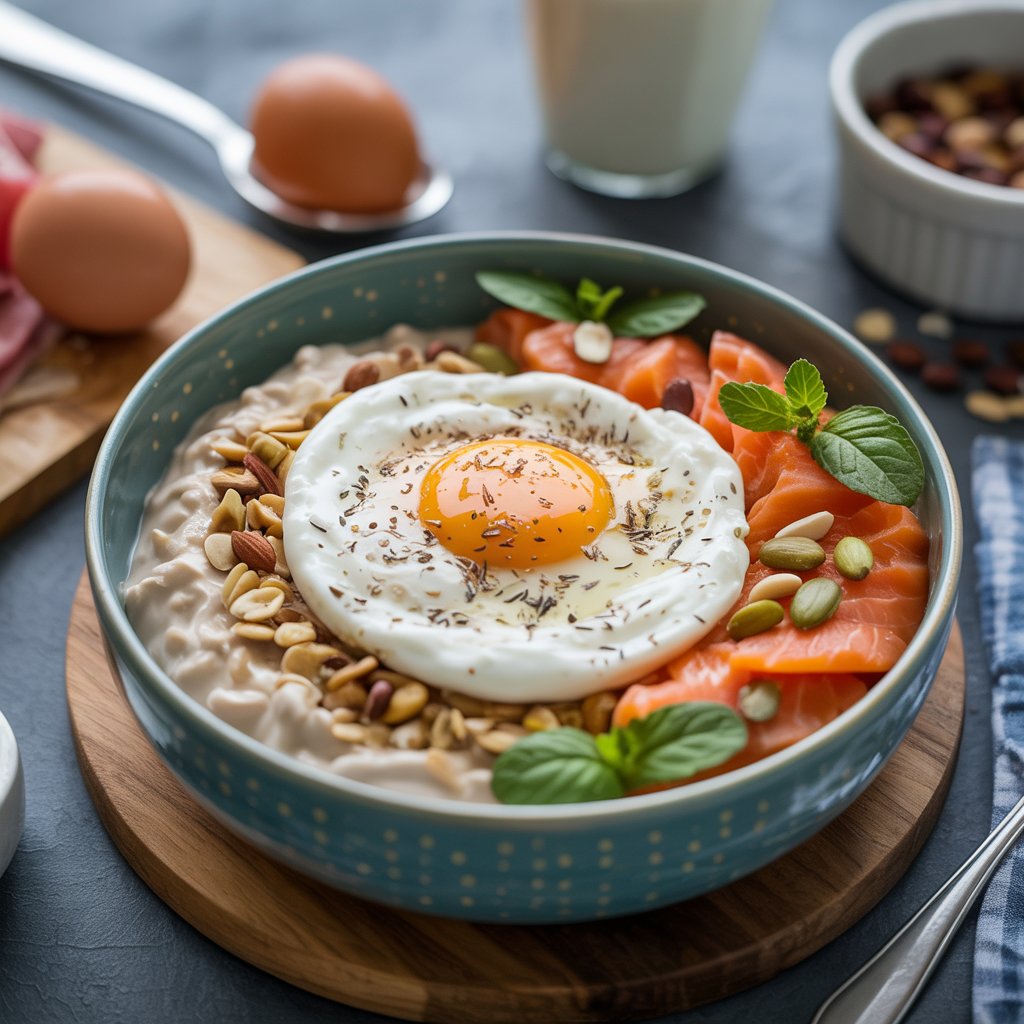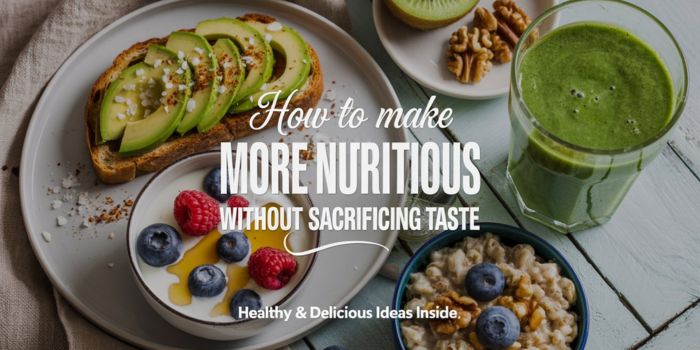Commence your day with power by selecting intelligent breakfast options that both nourish your body and fulfill your desires. Time constraints and breakfast monotony need not deter you from enhancing your meals with protein, fiber, and essential nutrients while maintaining your preferred flavors.
This manual presents uncomplicated methods to enhance nutritional value per bite through inventive mixtures of common ingredients.
By exploring nutrient-rich alternatives and advanced cooking techniques, we demonstrate how to effortlessly craft delicious balanced meals that power your daily activities.
Refuse to accept mediocrity—explore the content below to discover methods for creating breakfasts that are both nutritious and irresistible.
1. Opt for Whole Grains

Whole grains are a powerhouse for breakfast nutrition. Unlike refined grains, they retain their fiber, vitamins, and minerals, which help keep you full and energized longer. Simple swaps like choosing whole grain bread over white bread for toast or sandwiches can significantly boost your meal’s nutritional value.
Oatmeal is another excellent whole grain choice; it’s versatile and can be made savory or sweet. Quinoa is a hearty option that adds protein and texture to breakfast bowls.
Incorporating whole grains not only enhances fiber intake but also improves digestion and helps regulate blood sugar levels. For variety, try mixing grains like oats, quinoa, or brown rice with fruits, nuts, and seeds.
This creates a satisfying, nutrient-dense breakfast that doesn’t compromise on flavor or texture. Whole grains provide a rich, nutty taste that pairs well with many toppings, making your breakfast both wholesome and enjoyable.
2. Add More Fruits and Vegetables

Fruits and vegetables bring freshness, color, and a wealth of nutrients to your breakfast plate. Adding berries to your cereal or yogurt, blending spinach into your omelet, or topping toast with sliced avocado are easy ways to incorporate these nutrient-dense foods.
Seasonal produce can make your breakfast exciting and flavorful, offering natural sweetness and vibrant textures.
Vegetables like tomatoes, peppers, and mushrooms can be sautéed and combined with eggs or used as toppings for savory toasts and breakfast bowls. Fruits provide antioxidants, vitamins, and fiber that support overall health and digestion.
This approach not only boosts your nutrient intake but also enhances the visual appeal and taste complexity of your meal, making breakfast a delightful experience every day.
3. Choose Healthier Proteins

Protein is essential for satiety and muscle maintenance, and choosing the right sources can elevate your breakfast’s nutritional profile. Instead of processed breakfast meats, opt for Greek yogurt, which is creamy, high in protein, and lower in sugar than regular yogurt.
Eggs are an excellent protein source packed with vital nutrients like choline, B vitamins, and antioxidants that support brain and eye health.
Plant-based proteins such as nuts, seeds, and legumes can also enrich your breakfast. For example, adding nut butter to oatmeal or sprinkling seeds on yogurt adds healthy fats and protein.
Incorporating smoked salmon or cottage cheese offers variety and additional nutrients. These protein choices keep you full longer and help maintain energy levels without compromising taste.
4. Explore Flavorful, Healthy Recipes

Healthy breakfasts don’t have to be boring. Mediterranean-inspired dishes like spinach and mushroom frittatas, egg muffins with fresh herbs, or baked eggs with vegetables combine nutrition and rich flavors.
These recipes often feature wholesome ingredients like fresh veggies, herbs, and lean proteins, offering a balanced meal that’s both satisfying and tasty.
Making dishes like overnight oats with fruits and nuts, turmeric lattes, or savory breakfast bowls with chickpeas and asparagus can add variety to your routine.
These meals are easy to prepare, often make-ahead friendly, and packed with nutrients such as fiber, antioxidants, and healthy fats. Experimenting with spices and herbs can also enhance flavor without adding unhealthy extras.
Final Thoughts
Making breakfast more nutritious without sacrificing taste is about smart ingredient choices and creative preparation. Whole grains, fresh fruits and vegetables, and quality proteins form the foundation of a balanced morning meal.
By embracing colorful produce, wholesome grains, and flavorful proteins, you can enjoy breakfasts that fuel your body and delight your palate. Experiment with recipes and simple swaps to find your perfect nutritious breakfast routine.
Frequently Asked Questions
Q: How can I make my breakfast more filling without adding calories?
A: Focus on high-fiber whole grains like oats and quinoa, and include protein-rich foods such as eggs or Greek yogurt. Fiber and protein increase satiety and help control hunger without excessive calories.
Q: Are smoothies a healthy breakfast option?
A: Yes, especially when made with whole fruits, vegetables, protein sources like yogurt or protein powder, and healthy fats such as nut butter or seeds. Avoid adding excessive sugars.
Q: Can I prepare nutritious breakfasts ahead of time?
A: Absolutely. Overnight oats, egg muffins, and baked casseroles can be made in advance and stored for quick, healthy breakfasts during busy mornings.
Q: What are some good plant-based protein options for breakfast?
A: Nuts, seeds, legumes (like chickpeas), tofu, and plant-based yogurts are excellent protein sources for a nutritious breakfast.
By making these thoughtful changes, you can enjoy a breakfast that supports your health goals while satisfying your taste buds every morning.
